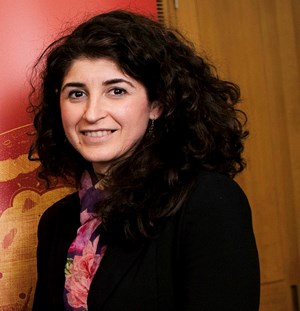Research And Grants

Bambino Gesú Children's Hospital - $99,382
Dr. Mara Vinci
$99,382.00
November 2018
Translational
DIPG
Investigating the Role of DIPG-Derived Exosomes in Tumor Growth and Invasion.
Diffuse Intrinsic Pontine Glioma (DIPG) is a highly aggressive and infiltrating brain tumor affecting children for which there is no effective treatment.
Sequencing data have revealed the existence of well defined subgroups of tumors based on age of onset, specific location in the brain, mutations and clinical outcome. Those tumous are characterized by specific recurrent mutations in histone genes which encodes for H3.3 and H3.1 and another mutation in a bone-related gene called ACVR1 which is largely found mutated with the histone H3.1.
Moreover, the existence of heterogeneity among the DIPG cells composing the tumor mass is increasingly evident. Our recent data suggest the presence of a “network” of distinct subpopulations that taken individually differ in their invasion and migration properties, that interact with each other and with the surrounding microenvironment to promote tumorigenesis and the progression of the tumor.
In this context, a crucial role in the communication between DIPG cells and the microenvironment may be represented by exosomes, cellular microvescicles containing RNA, DNA and proteins.
We hypothesise that the exosomes derived from DIPG cells could mediate the intercellular communication and that they could have a specific "oncogenic signature" that is specific to different molecular subgroup, and therefore could be used as an important diagnostic and prognostic marker.
To define the exosome signature of DIPG, we looked at the proteins enclosed in the exosomes and through which cells could exchange signals.
In particular, we used a panel of patient primary-primary cell lines characterized by the DIPG driver mutations (H3.3 K27M, H3.3 K27M/ACVR1 and H3.1 K27M/ACVR1) cultured in stem cell-like conditions, such as neurospheres (NS) and/or adherent to laminin (L).
Moreover, to better derive specific DIPG oncogenic exosomal signature, we used as a comparison pediatric glioblastoma (pGBM), which arise in different locations but maybe mutated in the same histone genes as DIPG.
The analysis of exosomal protein content showed that DIPG and pGBM carry unique proteins in the exosomes, highlighting the differences between the two tumor types, differences that were clearly shown also for the two DIPG subgroups H3.3 and H3.1
Focus of our study was also another molecule transported in the exosome: the micro-RNAs (miRs). Those are small RNA fragments, that may be exchanged among tumor cells and that we also considered for the identification of exosomal oncogenic signature of DIPG.
In this context, we analyzed the miRNA isolated from different patient primary-derived cell lines including different mutation and location subgroups. Our data showed that H3.1 K27M/ACVR1 DIPG subgroup was strongly different from H3.3 K27M DIPG and pGBM, concluding that the two main histone H3 gene variants leads to distinct oncogenic programs which could be exploited to develop distinct potential therapeutic strategies.
Moreover, since it has been demonstrated that DIPG and pGBM are heterogeneous tumors characterized by the existence of different cell types that co-operate and communicate one to each other, we also isolated single cells from DIPG and pGBM primary cell lines which were later exploited to give raise to different subpopulations and studied for the exosome.
The single cell derived subpopulations were characterized for their morphology, migration and invasion properties and they were different one from each other underlying the heterogeneous nature of DIPG and pGBM tumor masses. Moreover, we also analyzed the exosome communication between tumor cells, confirming that exomes are an important key of signals exchange.
Having consolidated the role of exosomes in DIPG and pGBM cellular connections and having highlighted some important proteins as well as miRNAs, that could be considered as “oncogenic signature” of DIPG and pGBM, our further aim is to investigate their presence in the exosomes from the peripheral blood of DIPG cancer patients.
This will lead to the identification of new diagnostic markers and prognostic strategies for DIPG and pGBM tumors.

